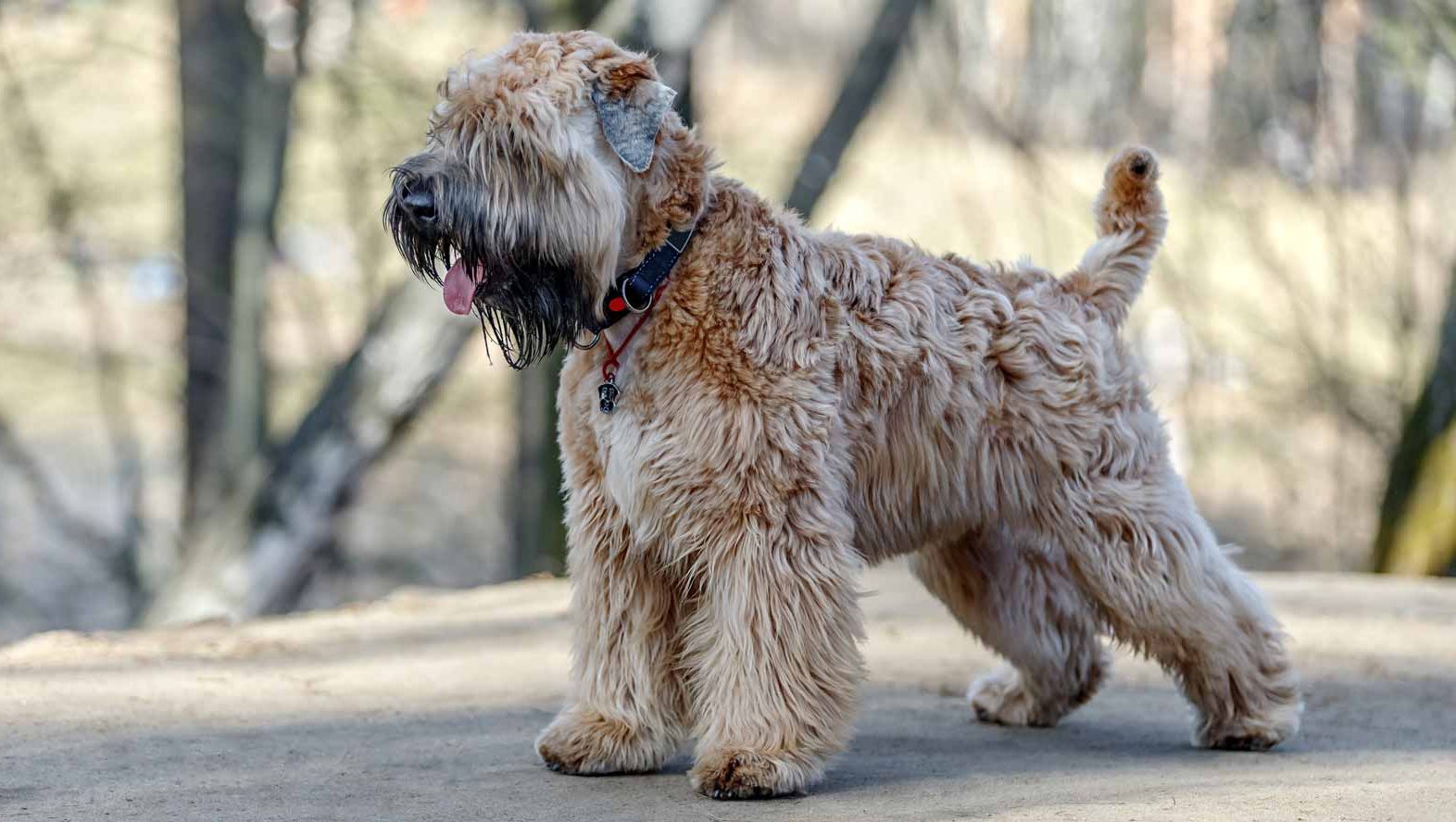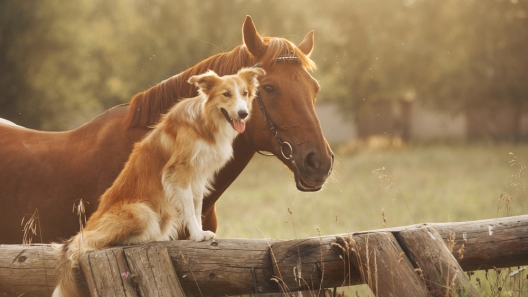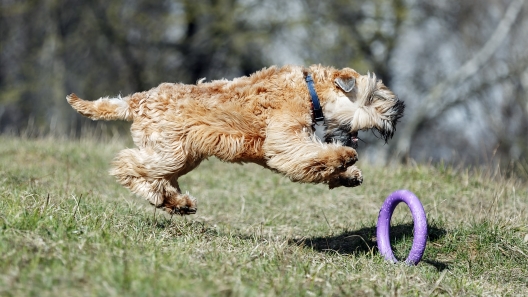-
Activity Level:
moderate
-
Shedding Level:
low
-
Grooming Level:
high
-
Trainability:
moderate
-
Good for Novice Owners:
moderate
-
Adaptability:
moderate
-
Kid/Pet Friendly:
often
-
Prey Drive:
high
-
Watchdog:
aware
- Average Size: Medium
- Average Lifespan: 12-14 years
- Registered?: aca, akc
Soft Coated Wheaten Terrier Dog Breed Information
Overview
Temperament
Adaptability
Health
Owner Experience
Grooming
Activity Level
Size
Life Span
Did You Know?
The Soft-Coated Wheaten Terrier, also called a Wheaten or Wheaten Terrier, originated in Ireland over 200 years ago. They were bred to be an all-purpose farm dog and were commonly found watching and guarding livestock, herding, and serving as vermin control.
Unlike their common ancestors, the Kerry Blue Terrier and the Irish Terrier, the Soft-Coated Wheaten Terrier didn’t often sit at the side of the gentry or nobility. One of the facts about Soft-Coated Wheaten Terriers is that these dogs, at least within Ireland, were referred to as the “Poor Man’s Wolfhound”.
Although the first Wheaten Terriers came to the United States during the 1940s, it took another decade for the breed to catch on and start being developed within the country. The American Kennel Club recognized the Soft-Coated Wheaten Terrier in 1973 as part of the Terrier Group.
Soft-Coated Wheaten Terriers are right at home whether they’re out working on the farm or just hanging out with their families. Their working history serves the Wheaten well in canine sport competitions and they can also be found working as therapy dogs.
This dog breed is lively, loyal, loving, intelligent, and energetic with a fun and playful disposition. They get along well with children and other dogs, but may need to be socialized with other smaller pets due to their strong prey drive. They make good watchdogs as they are alert, but their guard dog instincts are reserved for livestock as they tend to be extremely friendly in other capacities.
Soft-Coated Wheaten Terriers can be somewhat standoffish with new people as they are protective of their families, but socialization early and often, plus proper introductions, can help curb this initial wariness. Once they’re comfortable with you, they tend to be quite enthusiastic greeters and may be prone to jumping up. Training your dog not to jump up early on can help curb this behavior while still maintaining their happy enthusiasm.
The Wheaten Terrier is a moderately adaptable dog breed. They can adapt to apartment living if they are given enough daily exercise and mental stimulation. But, they are generally better suited to larger homes with securely fenced-in backyards where they can run.
Because of their strong prey drive, Soft-Coated Wheaten Terriers have an urge to chase and will tend to chase anything, including cars. This means they should not be left off-leash unless they are in a securely contained area. These dogs prefer moderate and cooler climates. As with any dog breed, Wheatens are sensitive to the extremes.
And, they also tend to be prone to overheating in hot temperatures. It’s important to keep your eye on any dog during the summer and to understand the symptoms of heat stroke in dogs to keep them safe as the temperatures start to rise. Although these dogs have an independent nature, they also bond closely with their owners and enjoy spending time with them, so they do not like to be left alone for long periods of time.
Wheatens are a generally healthy dog breed. As with any breed, there are some potential health conditions to be aware of. In the case of the Soft-Coated Wheaten Terrier, these potential health concerns include hip dysplasia, Addison’s disease, renal dysplasia, skin conditions, and protein-wasting conditions.
PLN, which is protein-losing nephropathy, causes a loss of protein from the kidneys. PLE, which is protein-losing enteropathy, causes a loss of protein due to the digestive tract being unable to fully absorb it. Both of these can sometimes be managed if caught early enough, but do have the potential to be fatal.
Although these disorders are suggested to be genetic, there are still some unknowns around how they are inherited. Responsible breeders will make sure they are screening their dogs to ensure things like this are not passed on to puppies. So, don’t be afraid to talk to the breeder about the genetic history of the parents and to ask to see any relevant health clearances and tests.
The national breed club recommends a complete blood count (CBC) test, a hip evaluation, Protein-Losing Nephropathy (PLN) DNA tests for Variant 1 and Variant 2, an ophthalmologist evaluation, a UPC/Micro Albumin (MA) test, urinalysis, and a serum chemical screen at a minimum.
The Soft-Coated Wheaten Terrier is a moderately trainable dog breed. Although they are intelligent and pick up on things quickly, they are also independent and have the stubborn streak that is common to many terriers, which can be a little difficult for a first-time dog owner to navigate on their own.
First-time dog owners can be a good fit for this breed with obedience and puppy training classes to help provide structure and guidance while building training skills. Wheatens respond best to positive dog training methods that focus on rewards and praise. Soft-Coated Wheaten Terriers are energetic and are bored easily, so they enjoy being challenged mentally and physically during training.
As indicated by their name, a Soft-Coated Wheaten Terrier’s coat is known for being soft, silky, and wavy. It should be no surprise that they are one of the fluffiest dog breeds. They’re also known for their shaggy, bearded face that features a goatee as well a scruff of fluff that hangs over their brow.
Although these dogs have a fluffy look, they have a low-shedding coat. Much like the Poodle, this dog’s low-shedding coat still requires a good bit of maintenance and care. You’ll want to have a few different types of dog grooming brushes on hand. Every day, you’ll want to use a slicker brush or pin brush in order to remove loose fur and dirt. Then, you’ll want to use both a medium- and fine-toothed comb to work out tangles.
Should you find any mats, you’ll want to gently pull these apart and work them out using your fingers, the brush, and the comb. Although it may be tempting to cut them out with scissors, this should be avoided as it can damage their coat and contribute to skin irritation. On top of that, you’ll want to get your dog professionally groomed about every four to six weeks.
In addition to coat care, you will also need to care for your Soft-Coated Wheaten Terrier’s nails, ears, and teeth. Your dog’s nails should be trimmed regularly to keep them from getting too long and causing pain and discomfort.
Usually, nail trimming once or twice monthly is sufficient, but you may need to file or trim nails more often if they are not wearing down as much between monthly trimmings. If you hear your dog’s nails clicking on the floor before the next monthly nail trimming, they’re getting too long and it’s time to cut your dog’s nails!
It’s also important to regularly check and carefully clean your dog’s ears as needed. Ears that droop or flop over are more prone to trapping dirt, debris, and moisture, which can lead to ear infections. By checking your Soft-Coated Wheaten Terrier’s ears weekly to ensure they are dry, clean, and free of debris, you can help prevent ear infections. And, if there is something going on, you’ll be able to catch it early.
You will also need to care for your dog’s teeth. Dental care for dogs is so important. But, it is often overlooked, which is why dental disease is one of the most common health issues in dogs. Brushing your dog’s teeth or using an enzyme toothpaste every day, along with cleanings at the vet when needed, is ideal to prevent the tartar and plaque buildup that causes dental diseases like gum disease and tooth decay later in life. You can also talk to your vet about adding dental hygiene chews and a “dental care diet” to help supplement your efforts.
A Soft-Coated Wheaten Terrier has a moderate activity level that can easily jump into the high-energy range. Although they are not often on the level of some other high-energy working dogs, they still require plenty of regular exercise to be happy and healthy. They also tend to maintain their energy levels even as they age, so you will need to be prepared to stay active with your Soft-Coated Wheaten Terrier.
Daily walks in addition to playtime and some extra activity should be enough for this dog. Favorite activities will depend on your dog, but there is plenty to choose from with this dog breed. Your Soft-Coated Wheaten Terrier may enjoy running with you, going for a swim, hiking with you, taking trips to the dog park, and more.
They also tend to be a good fit for popular dog sports like agility, obedience, tracking, and more. Just make sure activities stay low impact until puppies finish growing. Doing too much too soon can damage developing bones and joints. Your vet can help you determine when your Wheaten is ready to take on higher-impact activities.
Fully-grown Soft-Coated Wheaten Terriers usually stand 17-19 inches tall and weigh 30-40 pounds.
A Soft-Coated Wheaten Terrier generally lives for 12-14 years on average.
Although the Soft-Coated Wheaten Terrier has a long history in Ireland, they were not recognized by the Irish Kennel Club until 1937.









